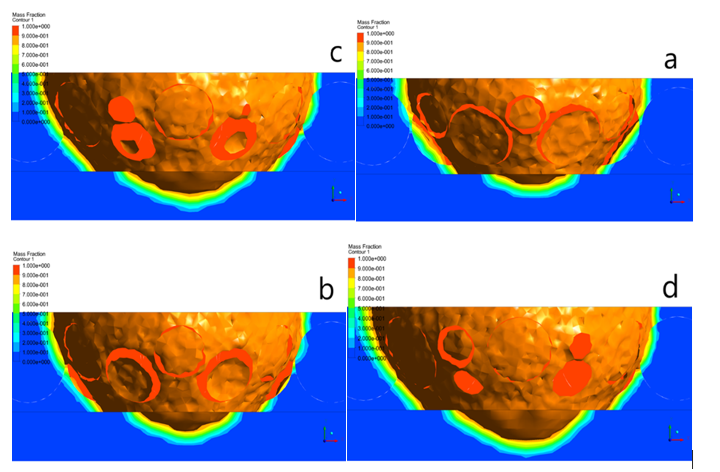A Computational Fluid dynamic (CFD) Modeling and FE Simulation of (NiBSi) Coating via Selective Laser Melting Process
Main Article Content
Abstract
Powder bed methods, including selective laser melting (SLM), provide significant versatility in both design and manufacturing processes. However, the existing limitation of this method lies in its ability to produce single-material parts. For intricate multi-material requirements such as coating processes, optimal solutions involve a customized integration of diverse materials required to control the melting and solidification process within the different metals’ interfaces. In this study, a computational fluid dynamic (CFD) model is created to analyze the two-metal SLM process, two types of metal used in this study NiBSi as a coat material on the surface of the stainless steel 316L. The model relies on classical physics laws to derive the governing equations, which are subsequently solved using the ANSYS FLUENT software. A User-Defined Function (UDF) written in C-language is utilized to define the heat source, and then it is executed over the cell face center in each time step. The melting of NiBSi powder on a stainless steel substrate was studied, and liquid mass fraction, laser power, and scanning speed were considered as the parameters of the investigation. The model undergoes a validation process using online-published data to confirm its accuracy and reliability before exploring four power values and four scanning speeds as parameters. The model predictions revealed a perfect interface region between the two metals and a clear correlation between the laser power and the size of the fully melted zone. 10
Received 29 Mar. 2024; Revised 27 Apr. 2024; Accepted 5 May 2024; Published online 15 Dec. 2024
Corresponding Author:[email protected]
Article Details
Issue
Section

This work is licensed under a Creative Commons Attribution 4.0 International License.




